Vitamin Worksheet, Quiz, and Projects
Watch your students pass the vitamin quiz after completing projects and listening to stories on 6 vitamins.
Free Download Below
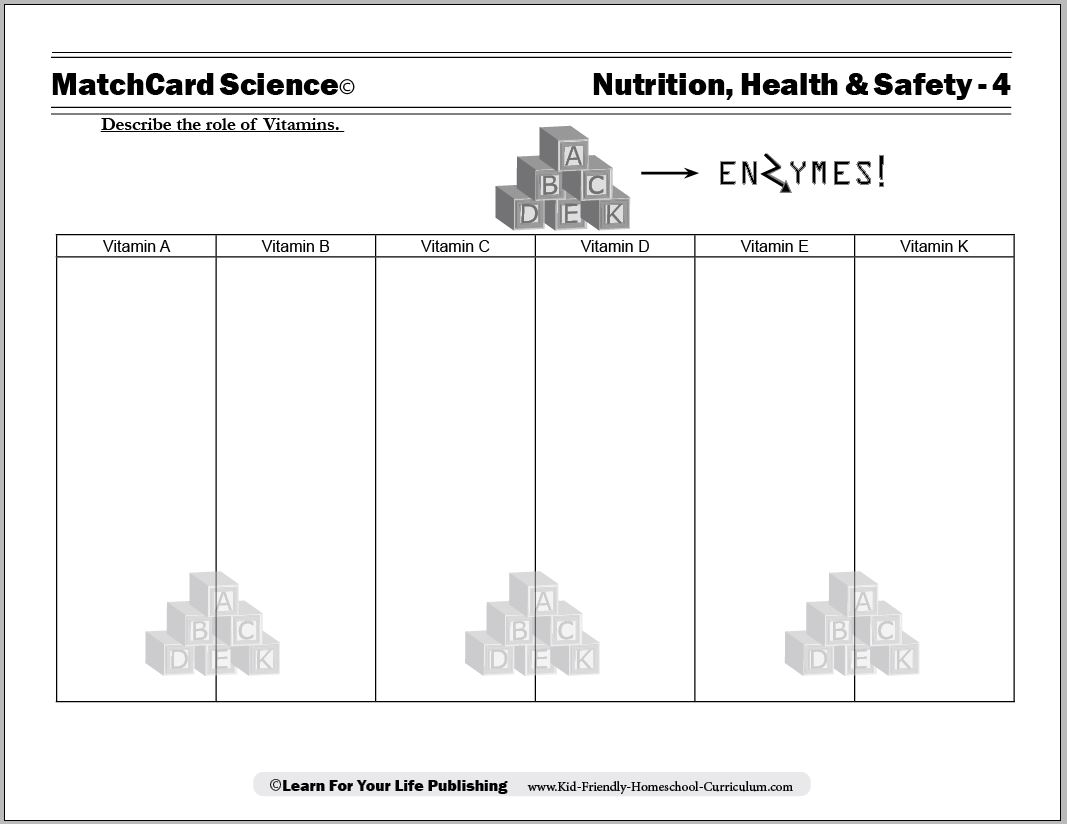
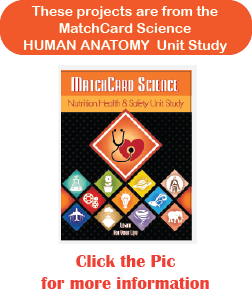
MatchCard: Download below.
The three parts of this lesson include:
You heard in our story that proteins are broken down in the cell. This is usually done by breaking the peptide bonds and then all the amino acids are left as solitary molecules instead of as chains of amino acids.
Pineapple contains an enzyme that breaks down peptide bonds. Sometimes when people put it in gelatin, their gelatin doesn’t gel. You can try it sometime. Or perhaps when they eat the thick stem at the center of the pineapple they notice their tongue is sore. That is because the enzyme broke down the proteins in their tongue. Ouch! (Don’t worry, the body will rebuild the protein matrix and they will be fine.)
Rather than wrecking your gelatin salad or pulverizing your tongue, we will make a meat tenderizer that is edible and tasty.
Remember that a milligram is 1/1000th of a gram. Pretty small, huh? So 50 grams of salt is the same as 50,000 micrograms of salt. One teaspoon of salt is about 2400 milligrams (about how much you should get in one day.) So how much would 20 milligrams be? Less than 1/1000th of a teaspoon.
So these tiny amounts of vitamins do a whole lot once they get inside the cells.
Free Download Below


MatchCard Science Rocks and Minerals Worksheet
Objective: Describe the role of vitamins.MatchCard: Download below.
The three parts of this lesson include:
- Information pieces on 6 essential vitamin groups
- 4 hands on projects
- 7 short stories
Print the Vitamin MatchCard
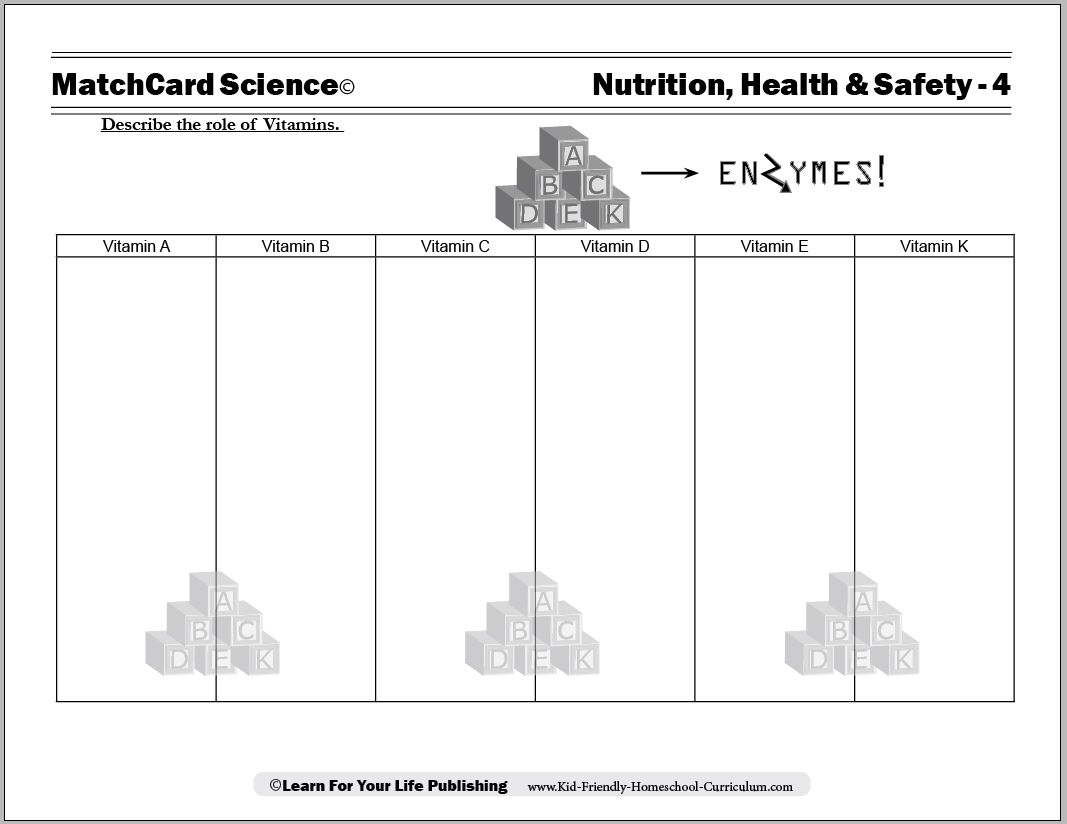

Click image to go to download.
This is MatchCard #4 of the Nutrition, Health, and Safety Unit Study. More information on MatchCard Science at the bottom of this page.
Information on the 8 Vitamins
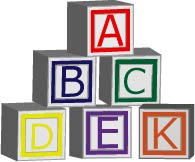
- What is a vitamin?
- Vitamin A
- The B Vitamins
- Vitamin C
- Vitamin D
- Vitamin E
- Vitamin K
- Fat vs Water solubility
- Food sources
- Main action of the vitamin
- Common names of the vitamins (Vitamin D and K excepted whose scientific names are seldom used.)
- Diseases prevented
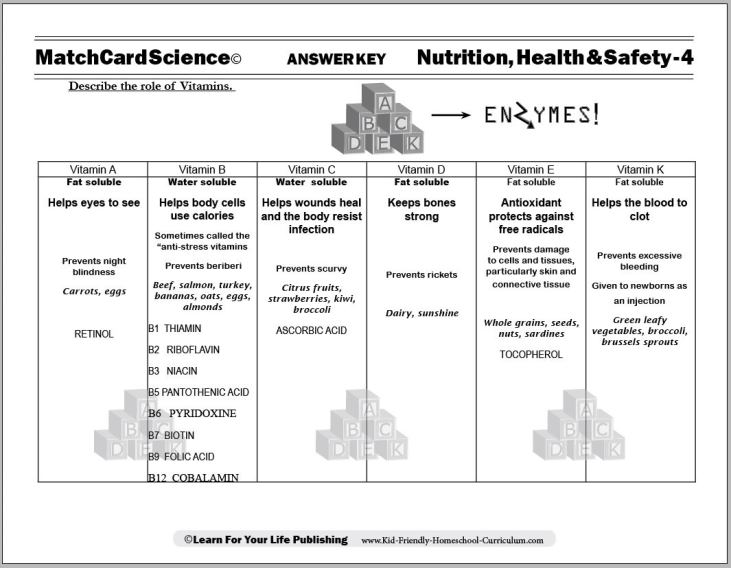
Vitamin Projects
We have three hands-on projects to enable students to further investigate the effect of vitamins.What is An Enzyme?
Vitamins make enzymes that carry out chemical reactions within the cells to make them efficient. We start with a dinner recipe that demonstrates how a particular enzyme breaks down the peptide bonds in protein, hence making meat more tender.
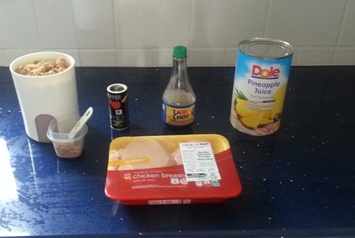
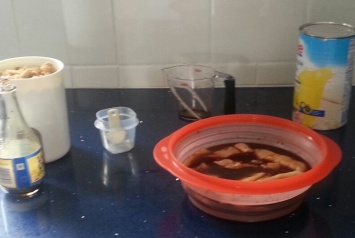
A Catalytic Recipe
Perhaps you remember the experiment for the protein matrix in NHS MatchCard #3: protein, carbs, and fats. Gelatin was mixed with water which created collagen, a tough, rubbery form of protein. You will also recall that proteins are made of amino acids. The amino acids are bound to each other with peptide chains.You heard in our story that proteins are broken down in the cell. This is usually done by breaking the peptide bonds and then all the amino acids are left as solitary molecules instead of as chains of amino acids.
Pineapple contains an enzyme that breaks down peptide bonds. Sometimes when people put it in gelatin, their gelatin doesn’t gel. You can try it sometime. Or perhaps when they eat the thick stem at the center of the pineapple they notice their tongue is sore. That is because the enzyme broke down the proteins in their tongue. Ouch! (Don’t worry, the body will rebuild the protein matrix and they will be fine.)
Rather than wrecking your gelatin salad or pulverizing your tongue, we will make a meat tenderizer that is edible and tasty.
Pineapple Marinated Meat
- 1 cup pineapple juice (fresh or canned)
- 1/2 cup soy sauce
- 2 tablespoons brown sugar
- 1 tsp pepper
- chicken, pork, or beef steak - about 2 lbs
Let's Check for Vitamin C
This next project has students mix a Vitamin C regent and test some common juices for their vitamin C content.Compare OJ, Lemon Juice, Grapefruit Juice for Vitamin C content
- Mix 1 teaspoon of water and 1 teaspoon of cornstarch. Stir to make a thick paste.
- Add the cornstarch paste to 1/3 cup of water. Bring to a boil.
- Add ten drops of 2% iodine (available at pharmacies and grocery stores.)
- Add two teaspoons of each solution to be tested to a different test tube or small clear container. Use a different straw or different eye dropper to prevent mixing solutions.
- Add one teaspoon of the iodine solution as your Vitamin C tester. Compare the test tubes against a light background. The more vitamin C, the lighter the color.
Vitamin E: The Antioxidant
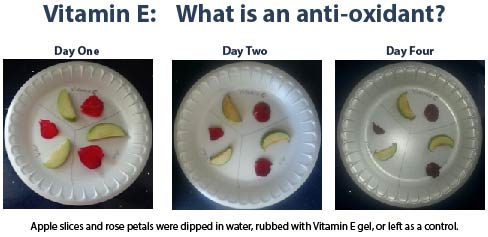
- Draw lines on a paper plate dividing it into thirds. Label one third “air”, another third “water”, and the third “Vit E.”
- Put an apple slice and a rose petal on each third.
- Dip the apple and the rose petal in the “water” section into tap water and place back on the plate.
- Put a pin whole in a Vitamin E capsule and squeeze the gel onto the apple slice and rose petal in the Vitamin E section. You may need two capsules. (Alternative: apply skin cream with Vitamin E onto the apple slice and rose petal.)
- Leave the others open to the air as a control.
- Observe for the next 24 hours. (4 days if using the skin cream.)
- Describe the effects of oxidation and the anti-oxidant effect of Vitamin E.
How Much Do We Need?
Comparing Grams to Milligrams
Unless you are a nutritionist or have a medical condition, it isn’t necessary to memorize the RDA (recommended daily amount) of the different vitamins. It is, however, interesting to compare HOW MUCH we need of vitamins compared to the Big 3 energy providers: carbohydrates, protein and fat. Depending on your age and level of activity here are the range of RDA’s:- 200-300 grams of carbohydrates
- 30-50 grams protein
- 65 grams fat
- 2 to 20 milligrams of most vitamins
Remember that a milligram is 1/1000th of a gram. Pretty small, huh? So 50 grams of salt is the same as 50,000 micrograms of salt. One teaspoon of salt is about 2400 milligrams (about how much you should get in one day.) So how much would 20 milligrams be? Less than 1/1000th of a teaspoon.
So these tiny amounts of vitamins do a whole lot once they get inside the cells.
MatchCard Science
How To Use MatchCards

Download the FREE MatchCard Science Instructor's Guide and see how MatchCards can make building their science knowledge base fun.
Nutrition, Health, and Safety Unit Study
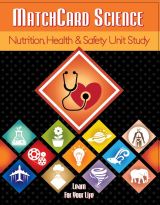
See more about the Nutrition, Health, and Safety Unit Study.
12 Science Unit Studies

Chemistry is only one of twelve complete unit studies for kids in 3rd to 8th grade.
Comprehensive objectives, hands-on projects, suggested science fair experiments, and the fun game-like MatchCards keep them interested in learning science. See all twelve MatchCard Science Unit Studies.
About Our Site
Hands-On Learning


Our Site At A Glance
By Karen Newell Copyright© 2009 - 2025 Learn For Your Life All Rights Reserved











